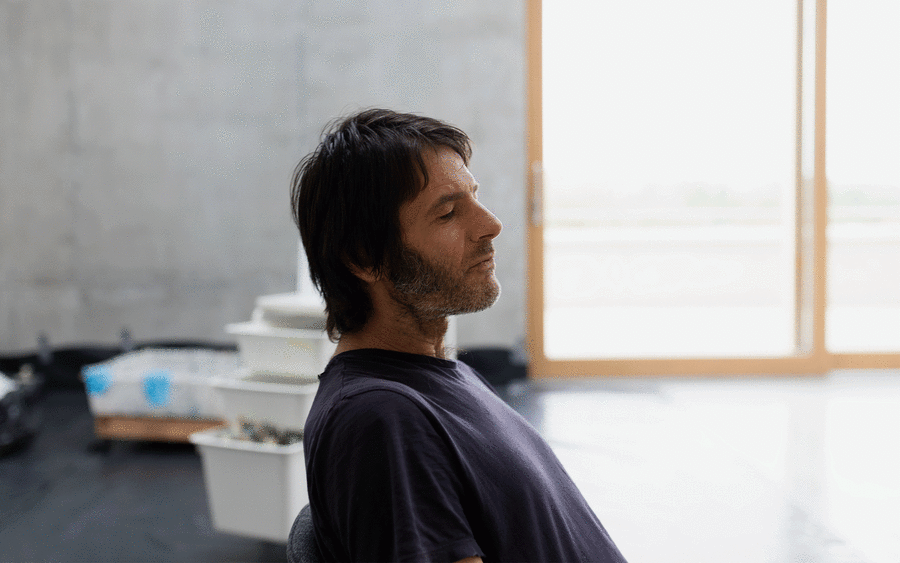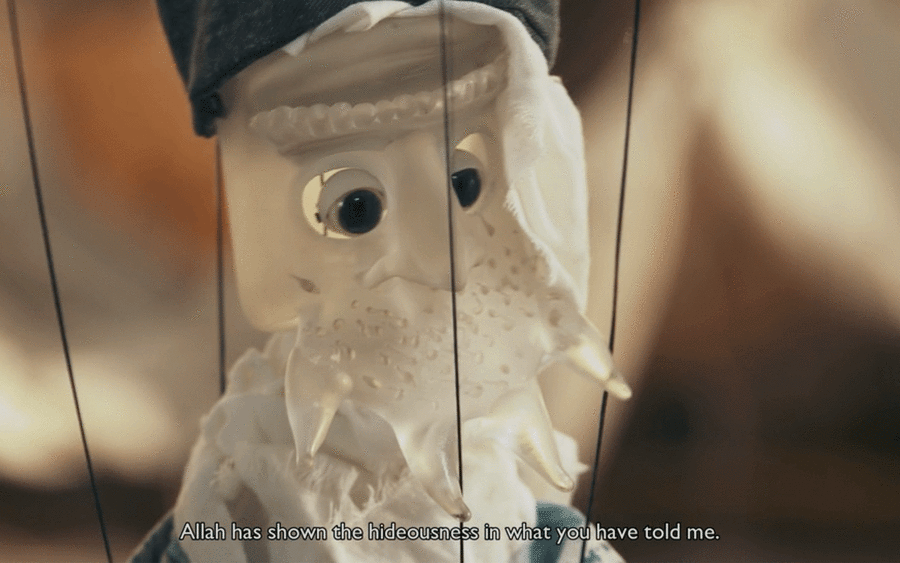‘The paintings function in the present tense,’ Matthew Krishanu explains, guiding me around his studio in London. We are speaking ahead of his exhibition, ‘The Bough Breaks’, at Camden Art Centre in London, and another solo show later this year at Tanya Leighton in Los Angeles. Krishanu’s figurative paintings explore the emotional states, memories, art histories, and legacies of past colonialism and empire, but still, Krishanu is engaging with the current moment. Recurring figures appear in his scenes, delicately balanced on colossal banyan tree branches in Banyan (Boy) (2023) and emerging from large-scale structures in Sculpture Park (Two Boys) (2023). In ‘The Bough Breaks,’ colonial legacies are fractured, resulting in a new narrative.
Using a broad set of references, ranging from Rembrandt to Roman fresco painting in Pompeii, Krishanu works across a variety of canvas scales. But his upbringing in Bangladesh with a West Bengali mother and White British father is at the foundation of his practice, which engages with the body as a framework to underpin humanity’s cultural, political traumas, such as subjugated and exploited bodies erased from Western – particularly religious – traditions of painting. ‘Both my parents worked for missionary organizations,’ he tells me, gesturing toward a religious scene of a priest conducting a service at an altar (Blessing, 2024). In Tree Climbing (Two Boys) (2021), the artist and his brother are portrayed seated on the cascading branches of a banyan tree, a symbol of eternal life in Indian culture. ‘My parents met because of the history of the British Empire in India,’ he notes. Krishanu’s paintings are a testament to the complexities of the postcolonial experience. He uses a different approach for each series, always employing a new logic of surface, scale, composition, and conversation.
In Preaching (2018) and Procession of Priests (2020), figures are rendered in simple, flat forms, depicted with glazed facial expressions. Here, in a challenge to the traditional power dynamics found in European Christian art – and, by extension, an attempt to explore ongoing global issues of inequality – the majority of the worshippers are Brown rather than White in Krishanu’s canvases. The paintings bridge the past into the viewer's present, blurring the boundaries of time. ‘It’s that old adage,’ says the artist, ‘that the personal is political.’
Matthew Krishanu is represented by Tanya Leighton (Berlin, Los Angeles), Niru Ratnam (London), and Jhaveri Contemporary (Mumbai). ‘The Bough Breaks’ runs from April 26 to June 23, 2024, at Camden Art Centre, London.
Sofia Hallström is a writer and artist based in London.
Caption for top image: Matthew Krishanu in his studio. Photograph by David Levene. Courtesy of the artist and Tanya Leighton.
Published on April 26, 2024.


